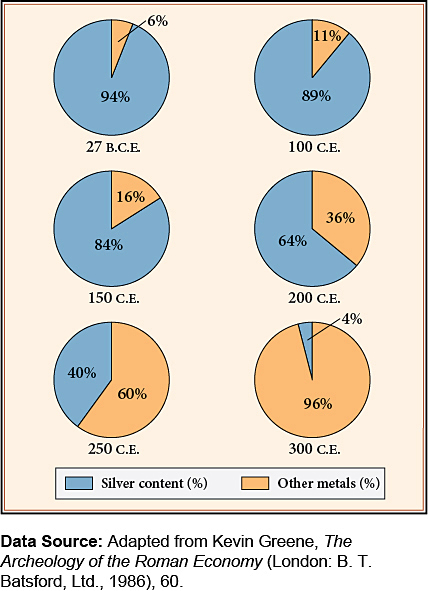Taking Measure: The Value of Roman Imperial Coinage, 27 B.C.E.–300 C.E.

Ancient silver coinage got its value from its metallic content; the less silver in a coin, the less the coin was worth. When government and military expenses rose but revenues fell because no conquests were being made, emperors debased the coinage by reducing the amount of silver and increasing the amount of other, cheaper metals in each supposedly pure silver coin. These pie charts reveal that devaluation of the coinage was gradual until the third century C.E., when military expenses skyrocketed. By 300 C.E., coins contained only a trace amount of silver. Debasement fueled inflation because merchants and producers had to raise their prices for goods and services when they were paid with currency that was increasingly less valuable.
Question to Consider
How might the increasing devaluation have affected the lives of citizens at all levels in the Roman Empire?